Today we headed off for visits with the Hadzabe Bushmen and Datoga tribes.
The Hadzabe bushmen would have taken us on a hunt, but we decided a few days ago that watching them try to kill a baboon was just a bit more than we would enjoy. We like seeing how other cultures live but seeing a primate killed would be a bit much.
This is the bushmen’s hut for the rainy season.
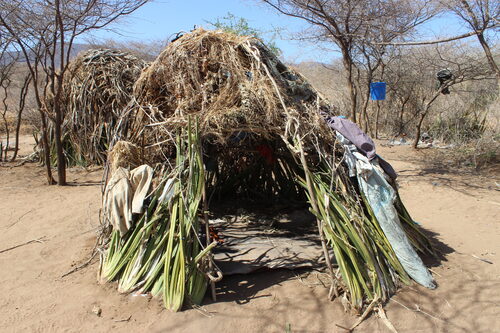
This is where a family lives in the dry season.
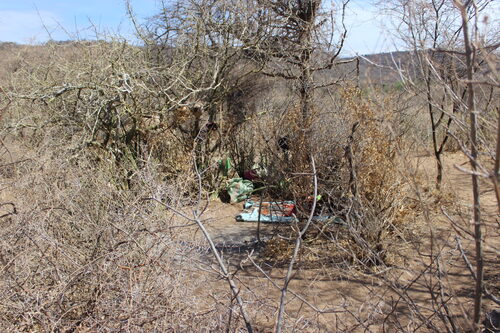
Its amazing to think how much of the world’s population still lives in this primitive an environment. Though not wholly unaffected by modern life. This warrior – who is shaping the feathers on an arrow – is wearing modern day jeans (as were most of them) with sandals made from old tires. The surface he is using to cut the feathers is the back side of his tire sandal.
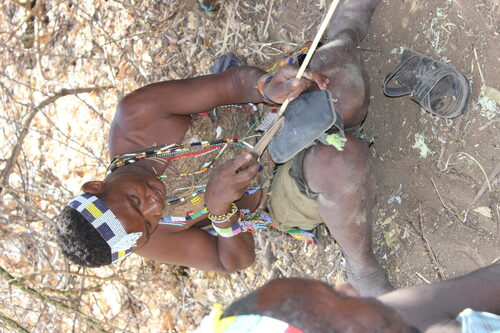
This little boy is wearing a top made from animal skin and jeans. He was cooking a small bird - no larger than his fist over the fire. He offered Dave a piece to try. Much to Melissa's shock - he took it and ate it (he hates eating small bony things). The boy then offered Melissa a bite too. It was actually pretty juicy and tender. Not at all gamey the way you would expect.
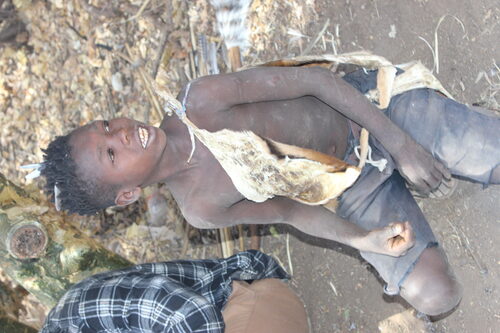
And these two youngsters wanted our water bottles. We gave the first to the younger boy (yes I know he is in a dress), and his big brother came and swiped it, so we gave them the second one. Our guide said that their parents would end up with the bottles eventually and use them to story honey.
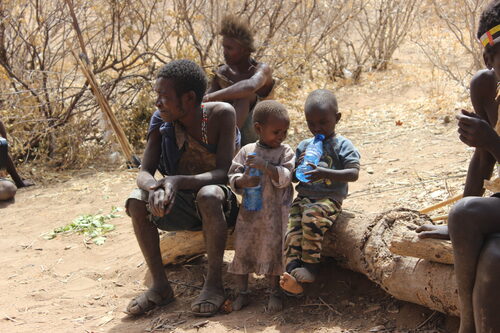
The bushman greeting is a fist bump. Unclear if we got this from them or vice versa.
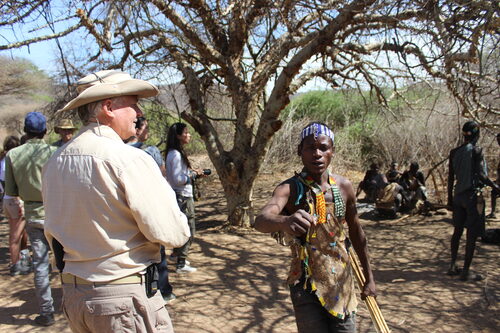
After a bit, Dave sat down with the men to learn about which types of arrows are used for which type of animal. If you listen and watch closely you can see the bushman imitating the animals the arrows are intended to kill. They also made fun of Dave trying to imitate the names of things which include all kinds of clicking sounds that are not part of our language.
Here is a piece of the tree that they make the poisoned arrows from. There is apparently a local antidote if they stick themselves accidentally. But its deadly enough to bring down large game animals in about 20 minutes. They only use the poison arrows on large game because they have to cut the meat out around the arrow. A small bird would be inedible if shot with a poison arrow.
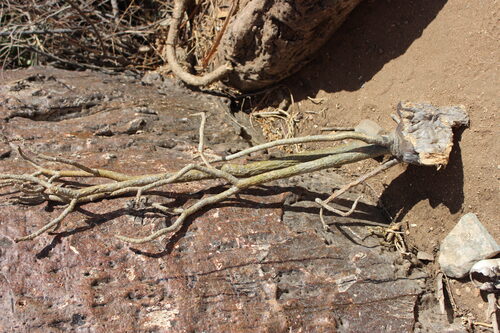
Then it was time to learn to make a fire.
After which Dave got a lesson in bow and arrow when it was target practice time.
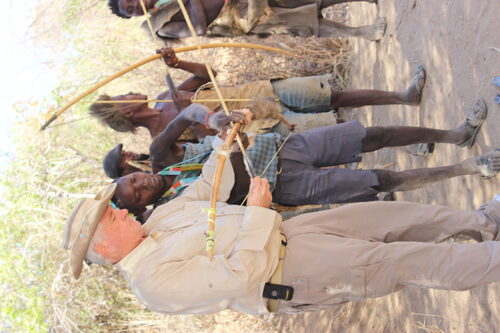
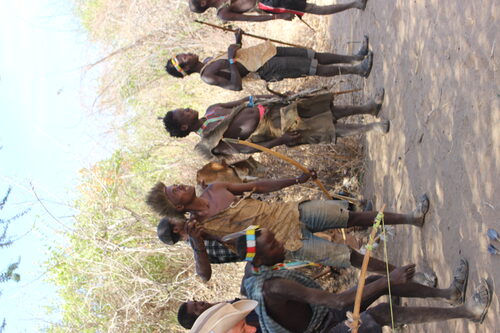
We then bought a hand carved wooden spoon from this lovely lady. Our guide said it was $5 USD. So Dave handed her 5 one dollar bills. She was utterly at a loss and looked at the pieces of paper as though they were, well, foreign. The guide had enough local currency to make a quick exchange. It’s the only time thus far where local currency has been needed. Everyone else loves the USD.
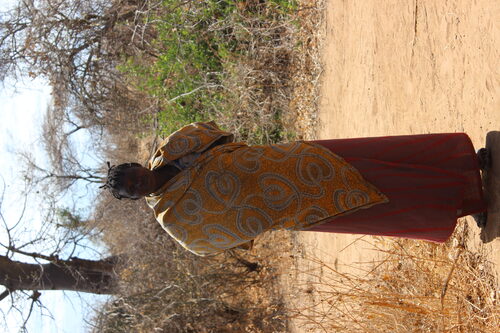
The other women in the tribe were nursing babies or making trinkets.
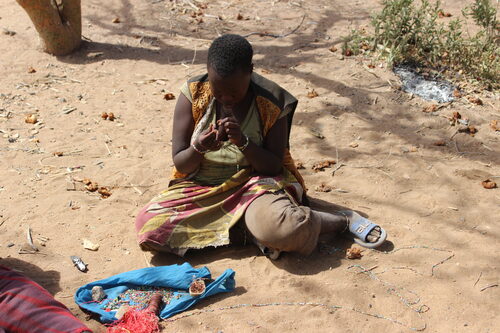
After this a serenade by the boys on home made instruments.
The boys escorted us back to our jeep and then we were off.
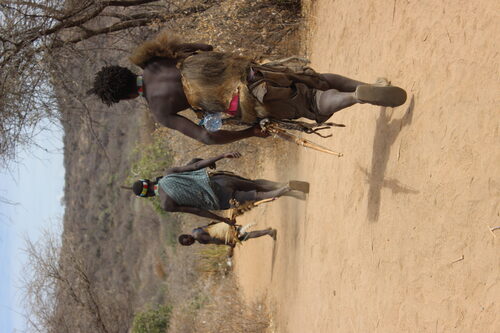
Next stop was a Datoga tribal home. The Datoga migrated from the middle east thousands of years ago. They are a polygamous tribe. We were able to sit in one of their houses and speak to all the women. We asked if they are always this dressed up, and our guide explained that while they would not dress this way while out tending cattle, they were expected to be dressed up at home.
The thing in the middle of the floor is a couple of stones for grinding corn.
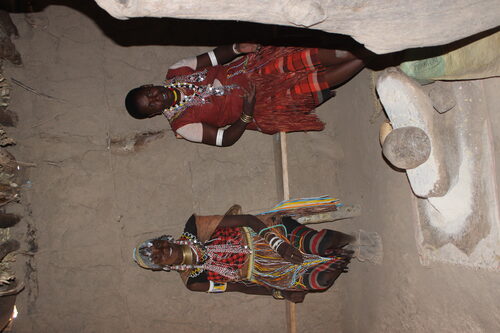
Here is Melissa learning to make corn flour.
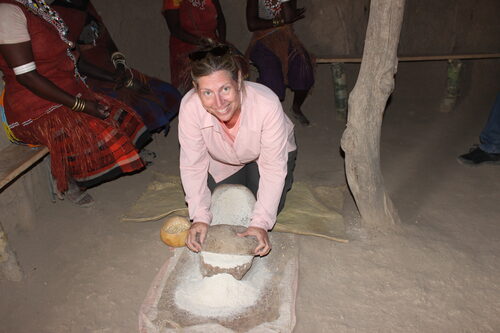
We sat and chatted with them for some time.
Questions we asked of them:
- Is the first wife here? How many children does she have? Answer was 8.
- How old was she when she married? Unknown. She has no idea how old she is. They tried to figure out the answer by figuring out how many generations of women had children. Answer still unclear, but there were clearly grandchildren. Some of the women were other wives, and some were daughters, and other ones wives of sons.
- What was the bride price (dowry) when she was married? 10 cows, some goats, tobacco, and honey. This is average as this was considered a “middle class” family.
- What is an average day for you like? You get up and grind flour for meals during the day. Often they grind throughout the day. They then make breakfast and send the children out to tend the cattle and goat herds. Then they walk to fetch the water. Then more tending of the livestock and cooking.
- What do you do when a child misbehaves? You beat them with your stick. And if that doesn’t work you send them out to tend the cows all day without breakfast. Same goes for wives that misbehave. The husband should beat them with his stick. (They all have walking sticks all the time.) This was said proudly. No hint of shame in this – discipline and respect for the elders is a thing that is immutable in this culture. We went onto explain that this is not allowed in our culture that the police would come and arrest you. This was met with shock.
Questions they asked of us:
- What was the bride price (dowry) Dave paid for Melissa? When they learned she was “free” this was met with shock.
- How many children do you have? When Melissa indicated zero, this too was met with frowns. Here a woman’s value is tied directly to how many children she has. Melissa tried to smooth this over by saying that she helped raise Dave’s son and this then was met with smiles and nods.
- What do you do? This was a tough one as it was completely unclear how to explain software engineering to women who have never seen a computer. Melissa said that Dave makes parts for airplanes and Melissa helps build computers (hoping maybe that was a known word). The guide struggled with this a bit and it wasn’t clear they comprehended this.
- What is a day in the life like for Melissa? She gets up and cooks breakfast. Then works on the computer and phone all day, then makes dinner or we go out to a restaurant. Follow up question: When does she go get the water? The guide attempted to explain to them that we live in a house with running water.
- We volunteered that Melissa cooks but Dave does the cleaning. The response to this was that Dave doesn’t beat Melissa enough. It was said jokingly with giggles – but surely with amazement that a man would do any cleaning at all. Later one of the women had set aside her walking stick and Dave jokingly acted like he was going to take it with him and this brought more peals of laughter.
- We also volunteered that the way we get food is we order it on our computer, and then someone brings it. This was met with clapping. Though unclear how this actually translated to them - probably something akin to we have servants.
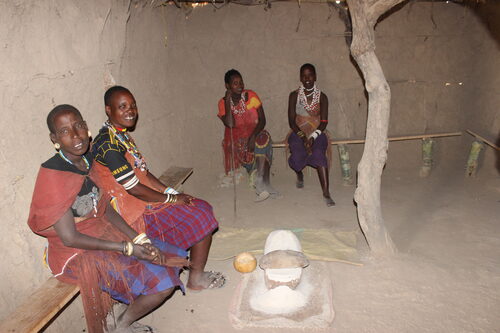
They then showed us the rest of the house. This was the bedroom. The bed is made from cow leather.
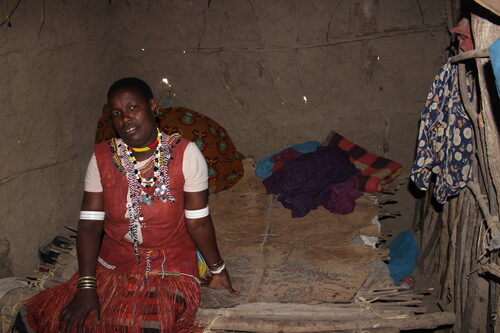
In the other corner of the room is the kitchen which is no more than some rocks, pans, and a fire.
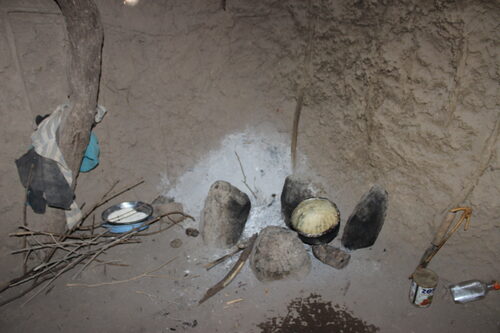
The one on the left in this photo is the one that told Dave he didn’t beat Melissa enough.
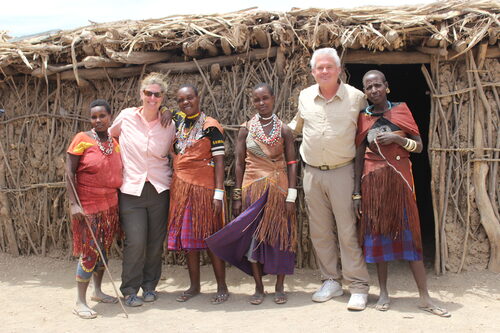
Next it was onto watching the men in their metal work shop. They make bracelets and other trinkets as well as arrow heads that they sell to the other tribes.
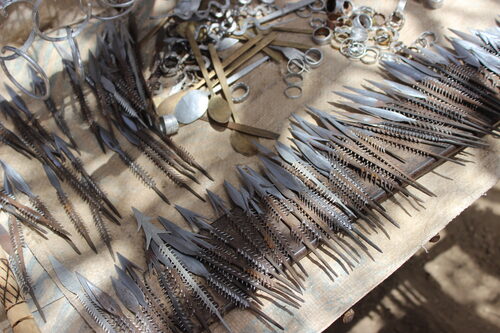
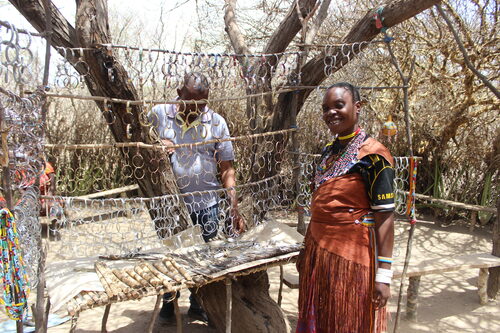
First step in the process is the forge:
Then once melted they quench it in oil:
They are melting down all kinds of scrap.
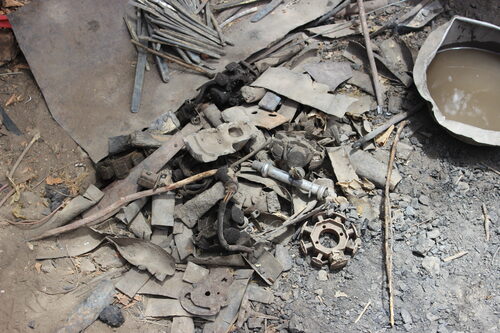
Once forged they pound it into shapes. In this video they are pounding steel nails into arrow heads.
And then once rough pounded to shape they do the fine mill work.
Melissa negotiated for 5 of the brass bangles. The tribeswoman tried to cover her in bracelets and necklaces, but caught on that Melissa liked a matching set of gold colored ones. The price given was $50 USD ($10 each). Melissa asked the guide if we were supposed to negotiate but he was of little help saying, “yes you can”. We had read that sometimes the asking price is as much as 10x the real price. But of course, the price wasn’t really the point. But being at a loss, she told the guide to tell the tribeswoman that in our home country of Mexico (yeah ok, sort of true, but not worth trying to explain) it was traditional to offer half of the asking price. The tribeswoman countered saying that the bracelets involved a lot of detailed work that takes hours. So she would take $10 each, but if Melissa bought 4 she would throw one in for free. Sold!
Both the tribes we visited today are paid by the guide company we hired. Some of the money goes directly to the individual family/groups we interacted with, but not all. Its too much money to give to them – they would just stop working. So most of the money goes to local infrastructure such as water and electricity.
We finally settled in for the night at Farmhouse Valley Lodge.